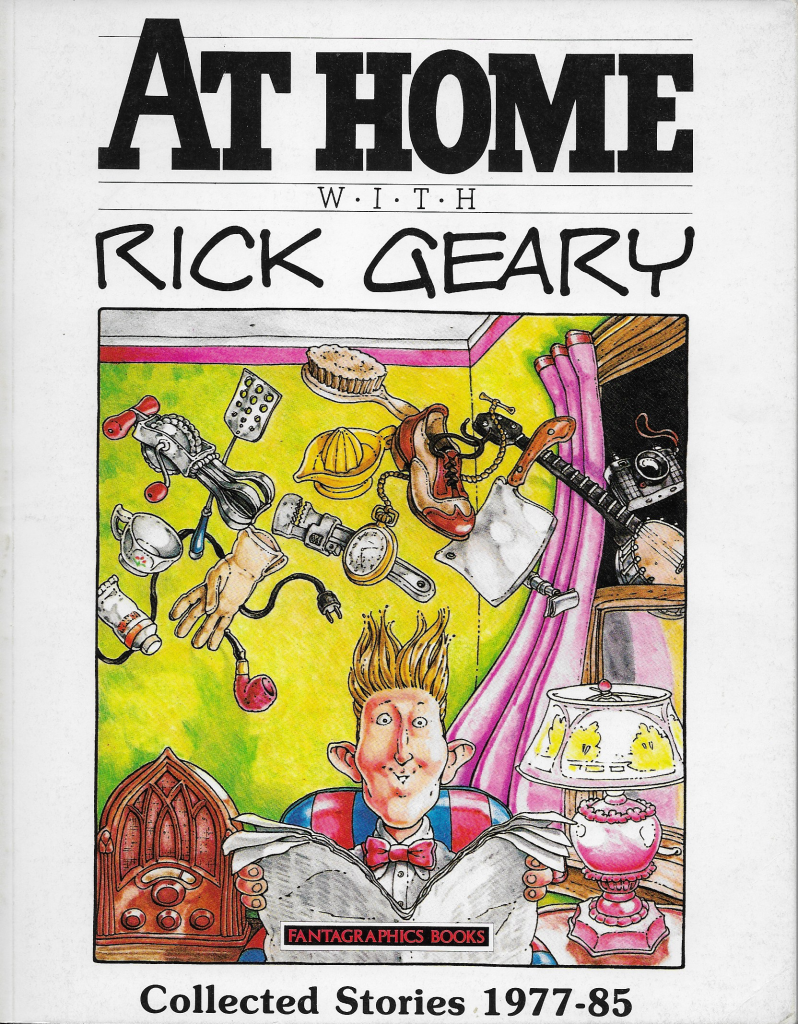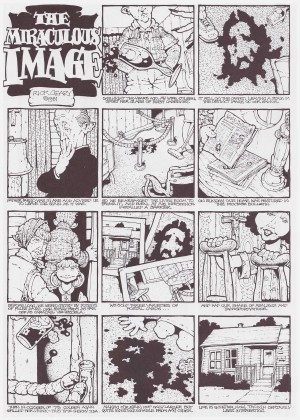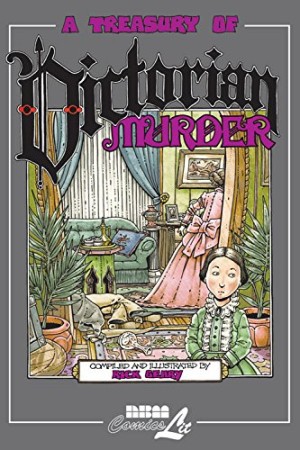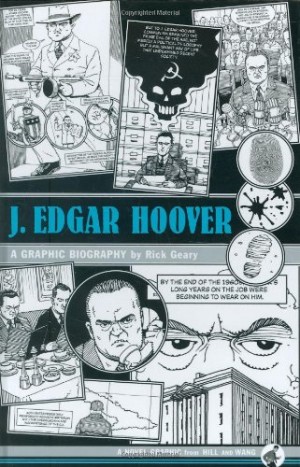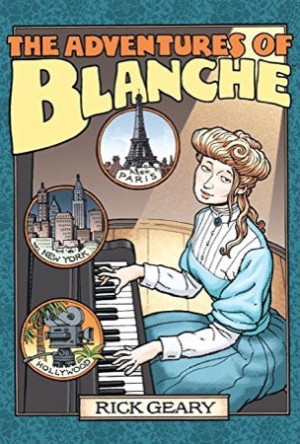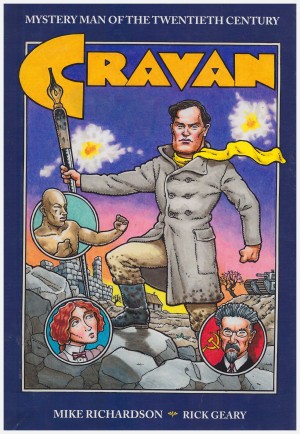Review by Graham Johnstone
Before his Treasury of Victorian Murder series, Rick Geary was known for quirky, evocative shorts. They’re so short, that this hundred page collection contains more than sixty.
Geary’s urbane and charming pages looked slightly out of place in Raw, next to, say, the punk rock ugliness of Gary Panter, or Kaz. Yet a closer look reveals commonalities: a fascination with American popular culture, a reaction against narrative constraints, and a playful dissonance between words and images.
Most of these ‘stories’ are ostensibly non-fiction, memoirs, reportage, or self-help. Just check the titles: ‘The Life of a Film Buff’, ‘The Man in the Iron Lung’, and ‘Making it In Hollywood’. Some, like ‘San Diego Transit’ are, on the face of it, simply lists, but Geary’s eye for odd visual details, and droll captions, edge them towards poetry. In ‘Let’s Get Organized’, for example, the drawing of the ‘Single Edge Rigid Ruler’ refutes the caption, and that’s no mere office clock, it’s a ”Visionette”. The title captions in ’The Age of Condos’ channel the aspirations and dreams of the unseen customers so well that it’s like a critical masterclass in marketing: ‘Sunburst’, ‘Vineyard Knolls’, ‘Fashion Hills’, etc. ‘Waitress School’ is cast as a student assignment, and shows his keen ear for voices and phrasing: “Something I didn’t know – always serve a wedge of pie pointed toward the customer.” It has the plausibility of a real, found item, or at least the cherry-picked highlights.
Legendary media commentator Marshall McLuhan, described comics as a “very participative medium”, as the reader has to fill in what happens between panels. Geary’s comics leave us some of the largest spaces to fill. They almost resemble film trailers, with the fragments chosen not major events, but telling details of a more gentle sort.
He also likes to dismantle and subvert narrative expectations. Take ‘The Day Nothing Went Right’ – it’s packed with tiny panels and long captions. These, in turn, are packed with details and micro-incidents that in the end go… essentially nowhere. He’s really showing us ‘The Day that Wouldn’t Become a Story’.
A later collection Housebound with Rick Geary, omits the eight page colour section and a further six pages, but compensates by arranging the contents in chronological order. The ordering here makes it harder to see Geary gradually refining his distinctive style – the caricatured, slightly bulbous, inflated figures, with exaggerated movements, all rendered in clean lines with minimal, stylised textures. In the later stories, he allows himself more space and varied layouts. This and the rendering progressively move towards the look of the Victorian Murder treasuries, only without the hatched lines mimicking period engravings. Admirers of his crime books will find plenty of pointers toward them as there’s Victoriana, murder, and sometimes both together.
The stories unique to this collection cover typical Geary themes like marriage, challenges for creative people, and American presidents. ’Teddy’s Day’ is presumably about Theodore Roosevelt, and a colour page has all presidents (to 1983) depicted as animals. Nixon as a rat makes obvious sense, with farmer Carter a bull, and Kennedy (literally) a young buck. American readers may see further significance. ‘Poison in the Pantry’ goes from marriage to murder in a single page, ending with typical Geary wit, as the wife, behind bars, reading a letter with a heart on it, announces “Already I have received 11 offers of marriage”. Completists will want this edition, but anyone else can save money with Housebound, which also adds a short appreciation by Alan Moore,
Both editions are out of print, but used copies are worth tracking down for anyone interested in well-observed, artful, inventive comics.
